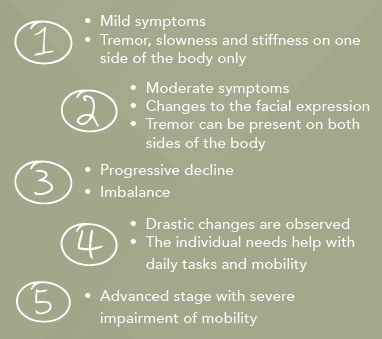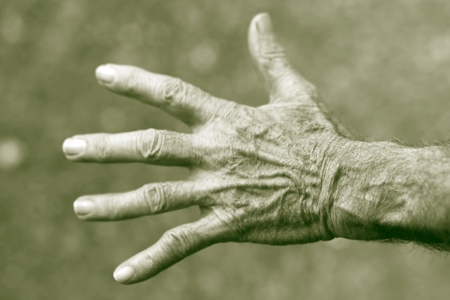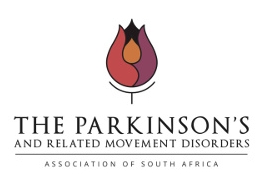


Family history
Exposure to chemicals, pesticides and toxins
History of serious head injury


Usually diagnosed by a neurologist (a specialist trained in the nervous system) based on medical history, physical examination and symptoms.
Other disorders can be ruled out with the help of specialised scans and ultrasounds.
Sometimes medication intended for PD is given and an improvement in the symptoms confirms the diagnosis.
A condition resembling PD is referred to as Parkinsonism. This can be caused by other neurological conditions as well as stroke and encephalitis (inflammation of the brain).
If you suspect that you may have PD and have booked an appointment with your doctor, do the following prior to the appointment:
Make a list of all the medication that you are taking – prescription and non-prescription
Keep written track of all the symptoms that you are experiencing so that your doctor can go through them with you
Make notes of recent life changes, stresses, injuries or accidents that you need to share with your doctor
Ask a family member or friend to accompany you
Make notes of the questions that you might have for your doctor
Stay informed about the disease and new developments in treatment but watch out for all the masses of false information.
Have regular follow-ups with your doctor
Exercise is very important and one of the few things that can change the course of the disorder.
Build support through family, friends and joining a local PD support group.

1. Butler, N. (2010), ‘Parkinson’s Disease Guidelines’, SA Pharmaceutical Journal 2. Kies, C.B. and Fine, J. (2009), ‘Guideline for the Treatment of Parkinson’s Disease’, SAMJ, vol.99, no. 10. 3. De Maagd, G. and Philip, A. (2015), ‘Part 1: Disease Entity, Risk Factors, Pathophysiology, Clinical Presentation and Diagnosis’, Parkinson’s Disease and its Management, 40(8), pp. 504-510, 532. 4. Davie, C. A. (2008), ‘A Review of Parkinson’s Disease’, British Medical Bulletin, vol. 86, no.1, pp. 109-127. 5. Jankovic, J. (2008), ‘Parkinson’s Disease: Clinical Features and Diagnosis’, Journal of Neurology, Neurosurgery & Psychiatry, vol. 79, no. 4. 6. Savitt, J.M., Dawson, V.L. and Dawson, T.M. (2006), ‘Diagnosis and Treatment of Parkinson Disease: Molecules to Medicine’, The Journal of Clinical Investigation. Ayano, G. (2016), ‘Parkinson’s Disease; A Concise Overview of Etiology, Epidemiology, Diagnosis, Comorbidity and Management’, Journal of Neurological Disorders. Brought to you by cipla Related Information POST-TRAUMATIC STRESS DISORDER (PTSD) PTSD is a serious and often debilitating medical condition that can occur in anyone who has experienced a traumatic event DEPRESSION MEDICATION SUPPLEMENT Depression is a common medical condition that has a big impact on a large number of areas in peoples’ lives DEMENTIA Dementia is the umbrella term for a range of progressive neurological disorders affecting brain functioning, including Alzheimer’s disease ANXIETY DISORDER There are five major anxiety disorders, and one of the most common is generalised anxiety disorder or GAD.



Disclaimer
This e-brochure has been auto-translated for your convenience. While machine translations are helpful, they may contain errors. Medinformer is actively working to have all translations reviewed by professional, mother-tongue language speakers, though this process will take time. For the most accurate information, please refer to the original English version. Medinformer and its partners cannot be held responsible for any inaccuracies that may result from the translation.
Thank you for your understanding.